Japanese gardens bring quietude, balance, and reflection. Rooted in harmony and simplicity, these spaces connect people to nature through intentional design.
Tranquility guides every element, making these gardens meditative rather than ornamental.
Their quiet beauty suits any space, tiny balconies or spacious yards.
Planning Your Space
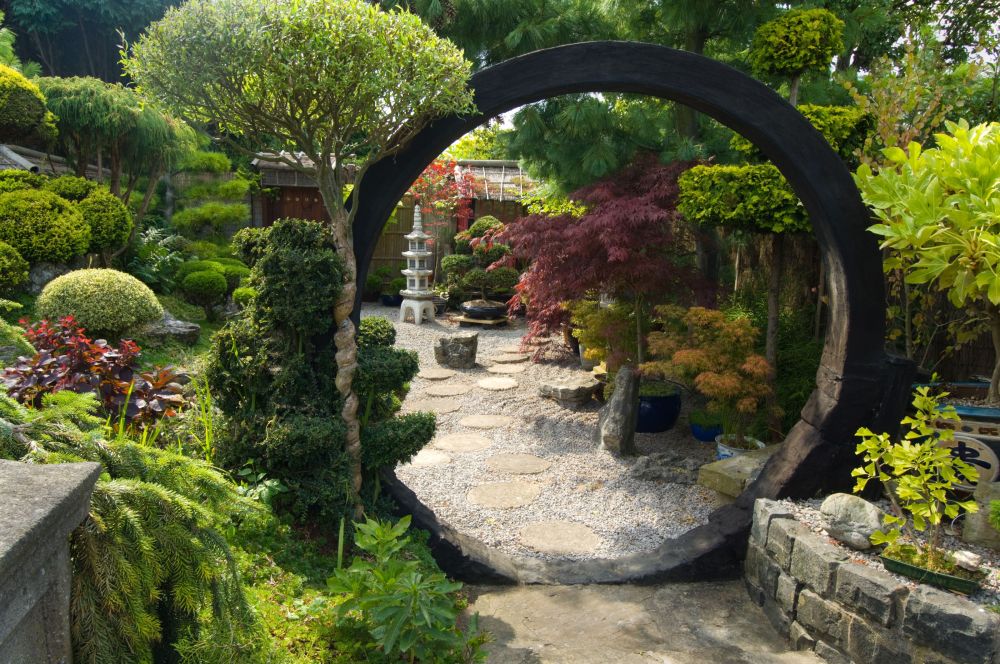
A Japanese garden starts with intention. Purpose dictates design—meditation, visual harmony, a sanctuary for rest, or space for peaceful conversation. Meaning defines structure.
Design aims should stir emotion, not just admiration. Stones may represent mountains, water may mirror change, and every element should whisper something meaningful.
When built around feeling, the garden transforms into a living poem.
Site Evaluation
Observe natural patterns, sunlight angles, shaded zones, moisture pockets, wind paths, and soil behavior. These guide layout choices more than sketches ever could.
Use what’s already present. Slopes, trees, and walls should shape the structure. Rather than removing or flattening, enhance what nature provides.
Water features deserve careful thought. A small stone basin (tsukubai) fits intimate corners, while larger areas can support koi ponds or reflective pools.
If possible, you can even consider opting for much bigger ponds or fountains, depending on your needs. If you need some professional help with deciding on what’s the best option for you, visit this site.
Select placement not only for function but for emotional resonance. The sound of trickling water or the sight of a still reflection changes the atmosphere. Ensure convenient access to water and proper drainage.
Essential Elements of a Japanese Garden
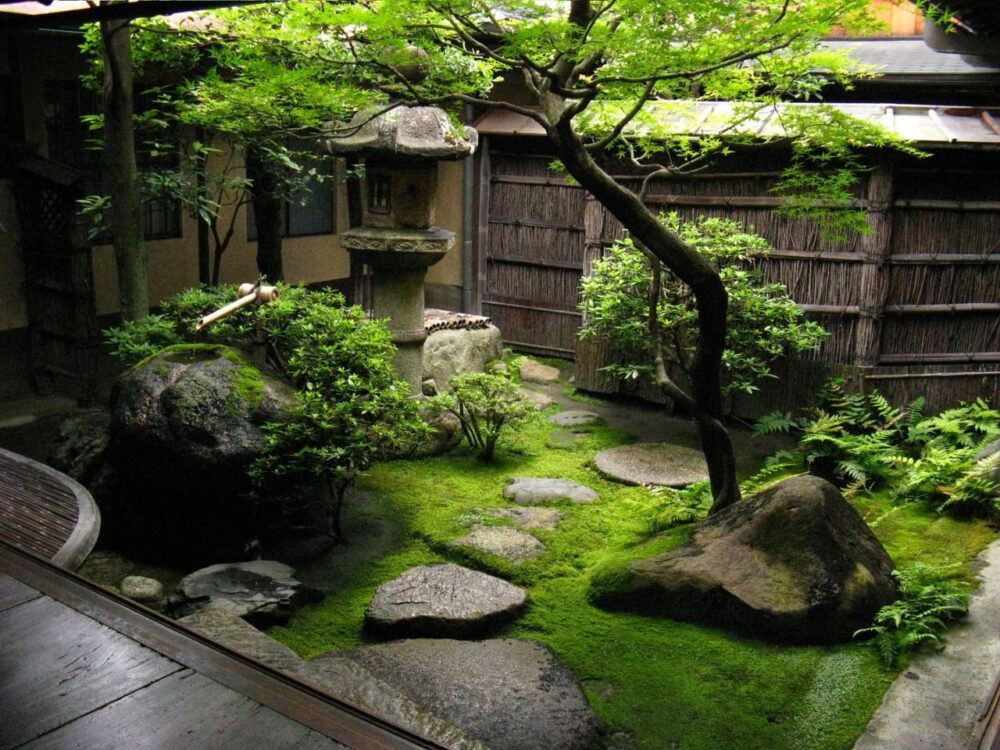
A Japanese garden evokes emotion through its carefully chosen elements.
Stillness and movement, permanence and change, these opposites live side by side. Water, stone, gravel, and texture become more than materials.
They become symbols, guiding attention and creating moments of pause. Two of the most important structural and sensory components, water features and stone arrangements, establish both mood and motion.
Water Features
Water introduces sound and flow into still surroundings. It draws the ear, slows the mind, and connects the space to natural cycles. Every element tied to water, even dry symbolic versions, adds emotional depth.
Soft splashes from bamboo fountains (shishi-odoshi) or the still surface of a stone basin (tsukubai) remind one to be present.
Placement matters. A fountain at the edge of a path may invite pause, while a small pool near seating can enhance rest.
In dry gardens, water is not poured but drawn in the mind. Gravel becomes stream. Rake marks become ripples.
Key elements to include:
- Tsukubai: Stone washbasins traditionally found near teahouses.
- Bamboo fountains: Gentle trickle of water that marks time without rush.
- Reflecting pools: Still surfaces that mirror the sky and surrounding forms.
- Karesansui gravel raking: Symbolic representation of rivers and waves.
Every splash, ripple, or suggestion of water supports reflection. Silence becomes more pronounced beside even the faintest trickle. The balance lies in restraint.
Stone and Gravel
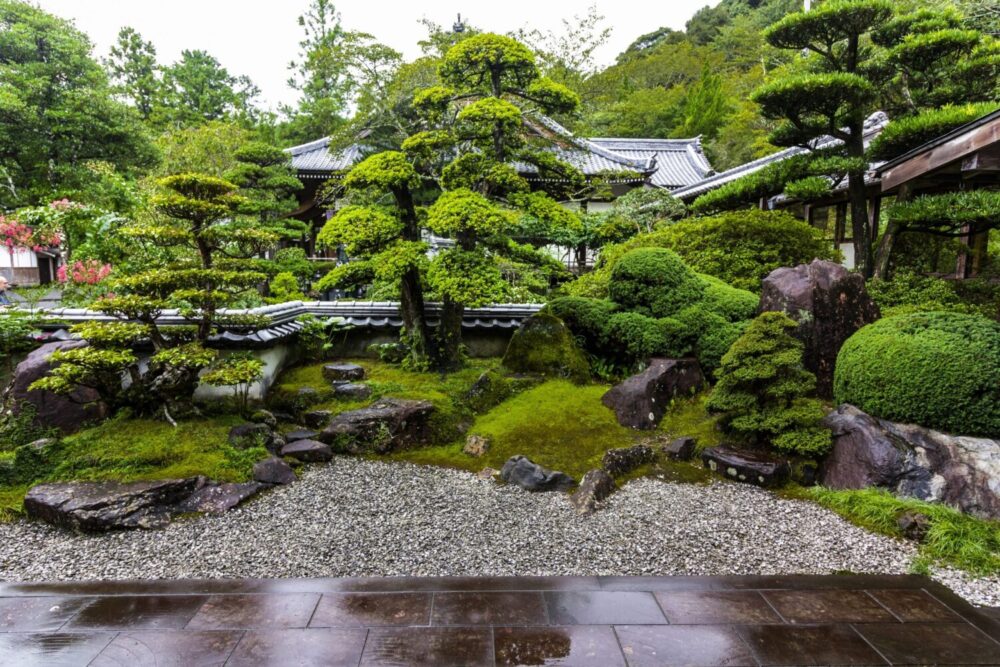
Stones define space. Gravel connects them. Together, they ground the garden. These materials shape structure and convey emotion through texture, weight, and placement.
Each stone tells a quiet story, not loudly, but insistently.
Larger boulders act as guardians or markers. Their immovability suggests continuity.
Smaller stones scattered nearby hint at narrative, perhaps mountain ridges or distant islands. The space between stones speaks as loudly as the stones themselves.
Gravel becomes both background and statement. Raked in curves or waves, it reflects time and movement. Each line, drawn with purpose, changes how the garden breathes.
Key elements to use:
- Feature stones: Anchor the design and symbolize strength or permanence.
- Gravel beds: Provide contrast, allow symbolic raking, and invite maintenance as meditation.
- Stone paths: Guide visitors at a thoughtful pace and organize spatial flow.
- Boulders and rock groupings: Represent hills, boundaries, or natural formations.
Paths slow the walker. One cannot rush over uneven stone. Every step must be considered, making the simple act of walking part of the mindful experience.
Movement becomes rhythm. Stillness emerges between steps.
Structural Features and Accessories
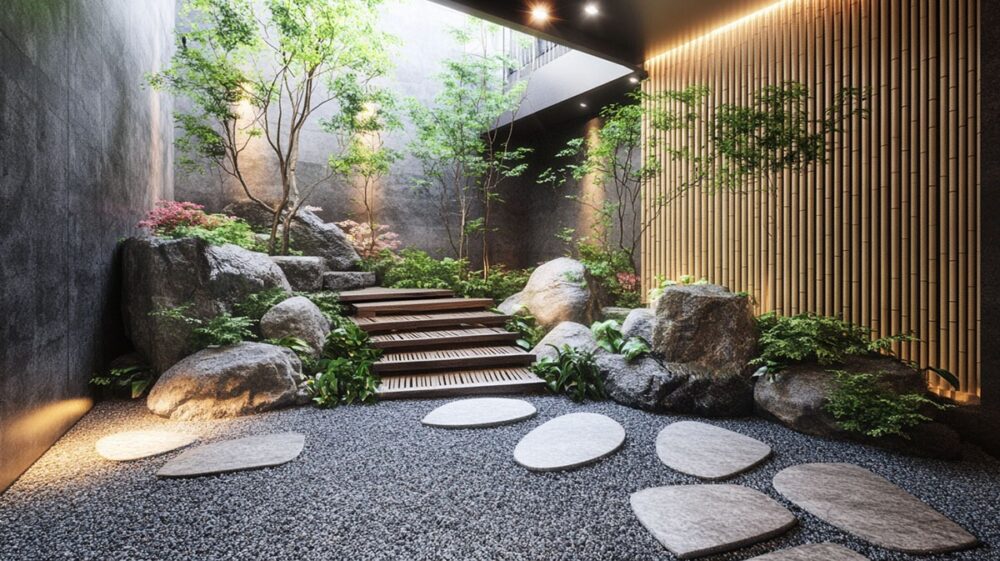
Every structure within a Japanese garden holds symbolic value. Built forms such as lanterns, bridges, and gates guide movement, mark transitions, and frame moments of silence.
Accessories add vertical lines, shape the flow of space, and define boundaries softly, without enclosing the soul of the garden.
Lanterns and Pagodas
Stone lanterns bring warmth and awareness. Their light is subtle, more spiritual than functional, offering quiet comfort as dusk falls.
Proper placement is essential, some lanterns line the path to gently guide visitors, while others rest alone to honor silence.
Pagodas introduce height. Layered in design and spiritually inspired, they draw the eyes upward and lend balance to low plantings or horizontal lines. Their form recalls sacred architecture and encourages a pause for reflection.
Important features to consider:
- Ishidoro (stone lanterns): Traditionally used in tea gardens and near water features.
- Kasuga-style lanterns: Tall with ornate roofs, often placed at path entries.
- Pagoda statues: Multi-tiered structures that create vertical interest and symbolic gravity.
Lighting in a Japanese garden does not flood. It whispers, encouraging calm and intimacy.
Paths and Bridges
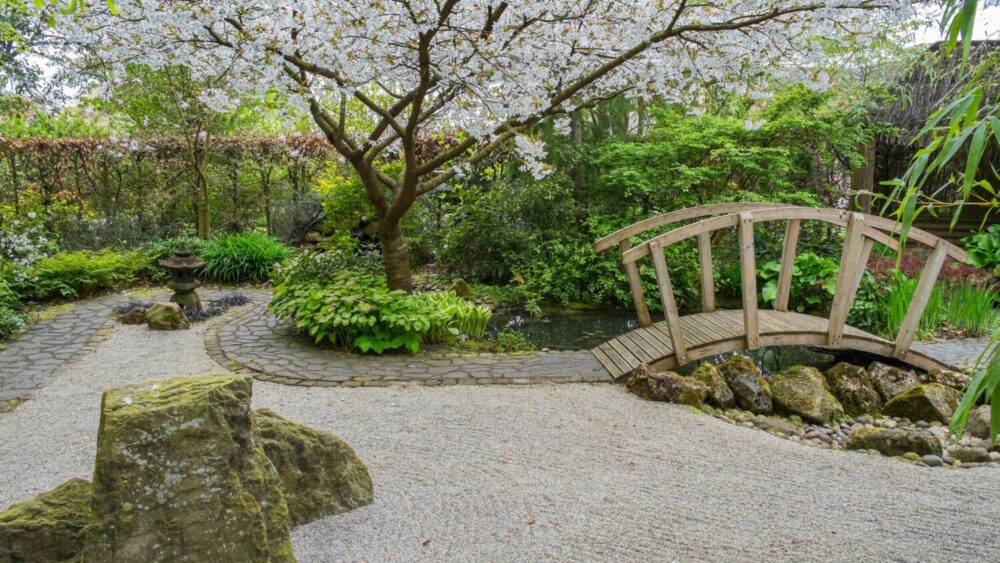
Paths guide the body, but more importantly, they guide the mind. Each footstep becomes conscious when stepping stones are spaced just enough to break normal stride.
Crushed gravel underfoot provides quiet sound, grounding movement.
Zigzag patterns shift direction suddenly. In ancient beliefs, such changes deter harmful spirits. In design, they introduce reflection and surprise. Every turn offers a new angle, a shift in mood.
Bridges offer more than function. They may span streams or rest over dry gravel. Their presence always signals transformation—a step into a new moment.
Structural choices for movement:
- Stepping stones: Encourage slower pace and heighten awareness.
- Gravel walkways: Anchor steps through texture and subtle sound.
- Zigzag paths (Yatsuhashi style): Symbolize mental shifts and quiet detours.
- Wooden or stone bridges: Create transitions and layered spatial meaning.
Walking becomes ritual. Even short paths offer depth when design demands presence.
Fences, Gates, and Pavilions
Fences define without isolating. Bamboo panels, wooden screens, and woven dividers offer structure while maintaining openness.
Gates signal transformation. A torii or arched threshold marks entry into sacred or special space. One passes through not just physically but mentally.
Pavilions and teahouses serve as still points. Designed for viewing, meditation, or tea ceremonies, they allow one to sit in peace without disconnecting from the surroundings. These structures feel open, even when enclosed.
Boundary and retreat features to include:
- Bamboo fences and woven screens: Provide gentle enclosure and privacy.
- Torii gates or simple arched entries: Indicate psychological transition.
- Teahouses or pavilions: Encourage pause, interaction, and quiet observation.
Structural features in a Japanese garden guide experience, define rhythm, and protect its inner calm without rigidity.
Budgeting and Material Suggestions

Starting small is wise. Moss, a few stones, gravel raked into waves—enough to spark stillness.
DIY methods help manage cost. Old containers become bonsai planters. Sand can mimic expensive gravel.
Basic materials:
- White or grey gravel
- Slate chippings
- Feature stones
- Bamboo pieces
- Wooden screens
- Weed barrier membranes
Premium additions:
- Hand-carved granite lanterns
- Mature bonsai trees
- Custom-made water fountains
Function always outweighs price. Intentional placement brings greater effect than expensive clutter.
The Bottom Line
A Japanese garden grows with patience. Intent shapes it. Time matures it.
Stillness is not an accident—it’s chosen. Create a space that whispers peace. Let each stone, leaf, and ripple remind you to slow down.
In that silence, a deeper calm will always wait.




